Perhaps the single thing that can most positively impact your experience on a flight is having an empty seat next to you. That’s especially true in economy, where space very much comes at a premium. I think everyone wants an empty seat next to them, but not many people are actually strategic about assigning their seats in order to maximize these odds.
So in this post, I’d like to talk about that in a bit more detail — what’s the best approach to maximizing your odds of having an empty seat next to you?
In this post:
The order in which airplane cabins & seats fill up
Maximizing your odds of having an empty seat next to you is essentially a game of reverse psychology. You want to assign yourself next to a seat that someone else doesn’t want.
For that matter, you also want to assign yourself the seats that gate agents are least likely to assign passengers at the last minute (whether those are confirmed passengers who just don’t have a seat assignment, or standby passengers who are cleared onto a flight).
So with that in mind, let’s cover the order in which seats on planes typically fill up:
- Seats are generally selected from front to back, within each zone; that’s to say that an extra legroom economy section is considered separately from the standard economy section
- Aisle seats are generally assigned first, followed by window seats, followed by middle seats
- The left side of the plane generally fills up first, followed by the right side, followed by the center section (if it’s a wide body aircraft with 7-10 seats per row)
It’s important to emphasize that the above is true broadly speaking, but of course there’s going to be some variability between flights:
- Extra legroom economy seating is going to be much more popular on a Monday morning flight from Chicago to San Francisco than on a Sunday morning flight from El Paso to Dallas
- Exit row seats are going to be more popular on a business route than on a flight to Orlando (since kids can’t sit in exit rows)
- Aisle seats are more popular on daytime flights than on overnight flights, where more people prefer being able to lean against the fuselage to rest (personally, I always prefer window seats)
- Seats filling up front to back depends on the extent to which airlines monetize seat assignments; beyond extra legroom economy seating, some airlines designate seats toward the front of the standard economy cabin as being “preferred,” and often those may fill up toward the end

Maximizing your odds of an empty middle seat
My seat selection strategy for maximizing my odds of an empty seat next to me is pretty straightforward:
- I select a seat as far back as possible in the “best” cabin I have access to; in other words, if I have access to extra legroom seating, I’ll sit as far back in that section as possible
- If I have access to exit row seats, I’ll assign myself the exit row seat that’s furthest back
- I typically sit on the right rather than the left, simply because for whatever reason, people tend to assign seats left to right
- When possible, I try to assign a seat that’s next to one empty seat, rather than being next to a pair of empty seats (since the middle seat is more likely to fill up if it’s available in conjunction with another seat)
For example, take the below economy seat map today on a United Boeing 787-9 from Houston to Tokyo Narita. The seat that are blue are Economy Plus (extra legroom), while the seats that are white are standard economy seats.
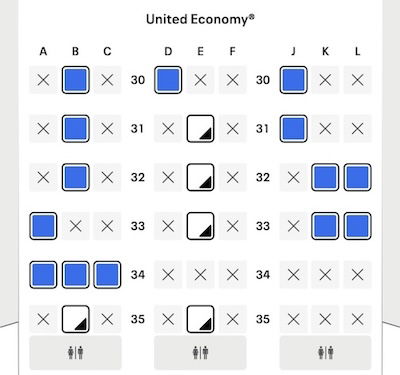
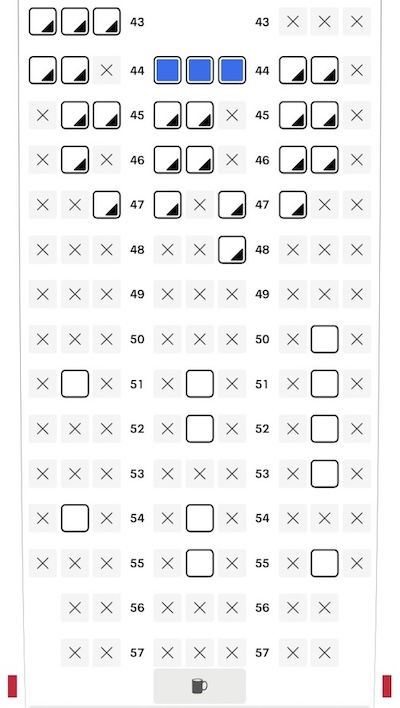
If I were traveling alone and had access to Economy Plus, I’d probably select seat 33L. Why? Because it’s the furthest back seat on the right side with just one empty seat next to it. Why not seat 34A, where there are currently two empty seats next to it?
Well, most flights have standby passengers (this flight has 13 listed), so I imagine that when a pair of standby passengers are cleared and they request to be seated together, they’d possibly be assigned seats 34B and 34C (if I selected 34A).
What about in regular economy? As you can see, a lot of people are in a pretty good spot there, with lots of empty middle seats. If booking early, I would’ve selected seats in rows 50-55, in the “J” or “L” position. As you can see, most of those seats currently have an empty middle seat.
With what’s currently remaining, I’d probably select seat 46D or 46J — they’re the aisle seats the furthest back with one empty seat next to them. You’ll absolutely want to stay clear of seat 47D or 47F — you don’t want to risk sitting next to someone who intentionally chooses a middle seat like that, it’s just too risky. 😉
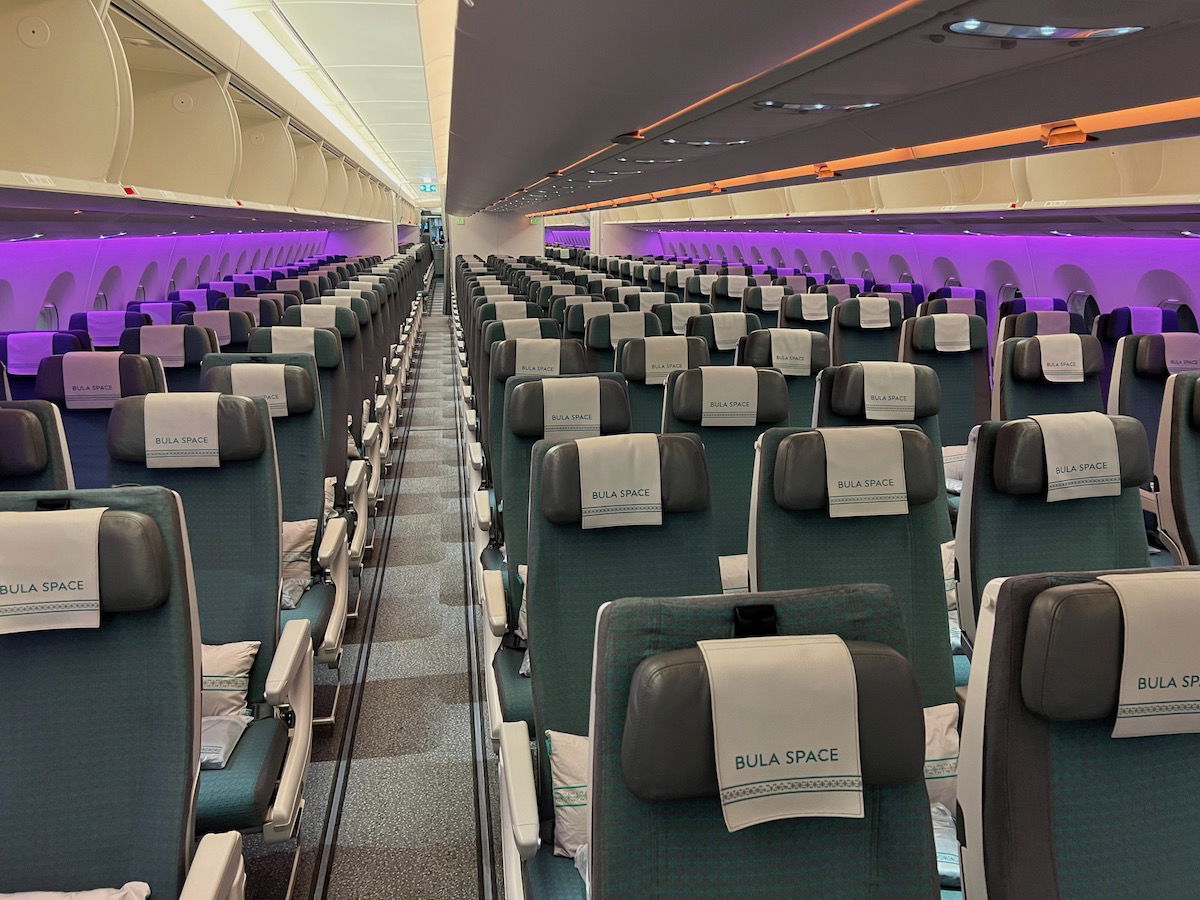
Don’t forget the most obvious strategy for an empty seat
While there’s a lot of effort you can put into maximizing your odds of having an empty seat next to you in advance, the most obvious strategy is to just politely ask at the gate. Shortly before boarding starts, there’s no harm in asking the gate agent if there are by any chance seats available that might have an empty seat next to them.
Of course don’t ask this in an entitled way, but rather, just very politely inquire. Furthermore, try not to do it if the gate agent is obviously overwhelmed, or dealing with some issues.
Some gate agents will be happy to make your day by helping you with that, while others might have a bit of an attitude, and be unhelpful. Either way, there’s no harm in politely asking.
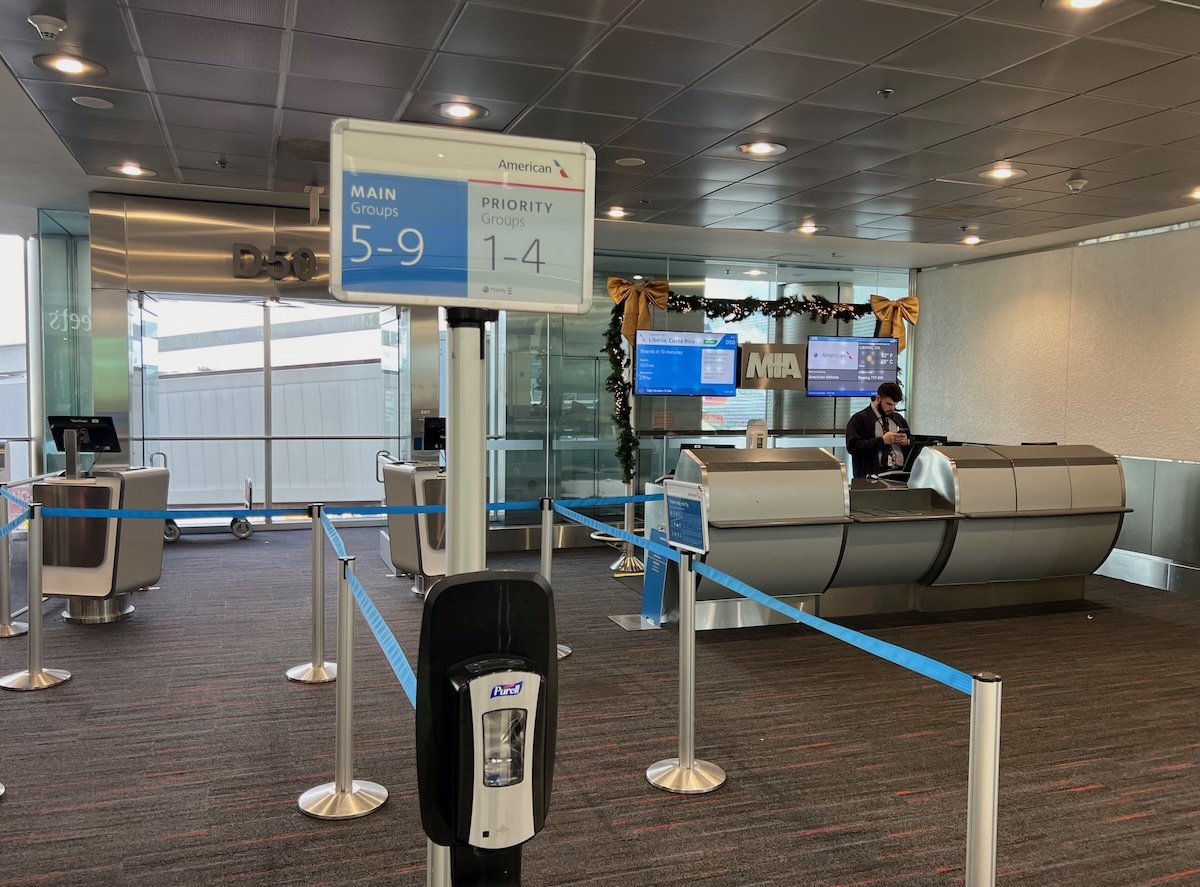
Should you even bother aiming for an empty seat?
I think one logical question is to what extent it even makes sense to strategize to get an empty middle seat. The reality is that so many flights are full nowadays, and if you’re trying to get an empty seat next to you, it might involve selecting a slightly less desirable seat than you’d otherwise choose.
Globally, the average load factor for flights is approaching 85%, so most flights are close to capacity, but not actually full. So I do think there’s value to being strategic with seat assignments.
However, it’s also important to be realistic. If you don’t get an empty seat next to you, don’t be surprised. Furthermore, consider the time of year and route you’re flying.
Like, if you’re flying from New York to Athens in July, don’t even bother angling for an empty seat next to you, because it’s almost certainly not going to happen. Meanwhile if you’re flying from Chicago to London in February, you might get an empty seat next to you without even trying.
So I think it’s worth putting a little bit of thought into this, but I wouldn’t select a materially worse seat in order to gamble on an empty adjacent seat.

Does the aisle & window seat swap strategy work?
A lot of aircraft have sets of three seats (an aisle, a middle, and a window), and one common strategy is for people to select an aisle and window seat. The idea is that by there only being a middle seat, it’s less likely to be occupied. Furthermore, if it does end up being occupied, the person in the middle seat will almost always be happy to switch for an aisle or window.
Is this a good strategy? While we can argue over whether this strategy is inconsiderate or not, I think it’s actually a smart approach to take. Indeed, someone is less likely to voluntarily assign a middle seat than to assign an open window or aisle seat, so this is more likely to work.

Does this strategy work in business class?
It goes without saying that having an empty seat next to you in economy is a lot more valuable than in a premium cabin, given the real estate allocated to each seat. That being said, it’s also nice to have an empty seat next to you in a premium cabin, especially if it’s not a solo seat with direct aisle access.
I’ve written in the past about my business class seat preferences, and I generally assign seats in the back of the cabin, ideally on the right side. That maximizes the odds of having an empty seat near you.
I love when there are multiple business class cabins on a flight, because if a flight isn’t full, it’s amazing how everyone gravitates toward the forward cabin. I’ve been on flights where the forward business class cabin was nearly full, while I had the rear business class cabin nearly to myself. It’s awesome when that happens.
Obviously this very much falls into the category of “first world problems,” but as a bad airplane sleeper, it really helps me to not have many people seated near me. I wake up too easily if there’s light, noise, smell, etc., so the quieter the cabin, the more uninterrupted sleep I get.
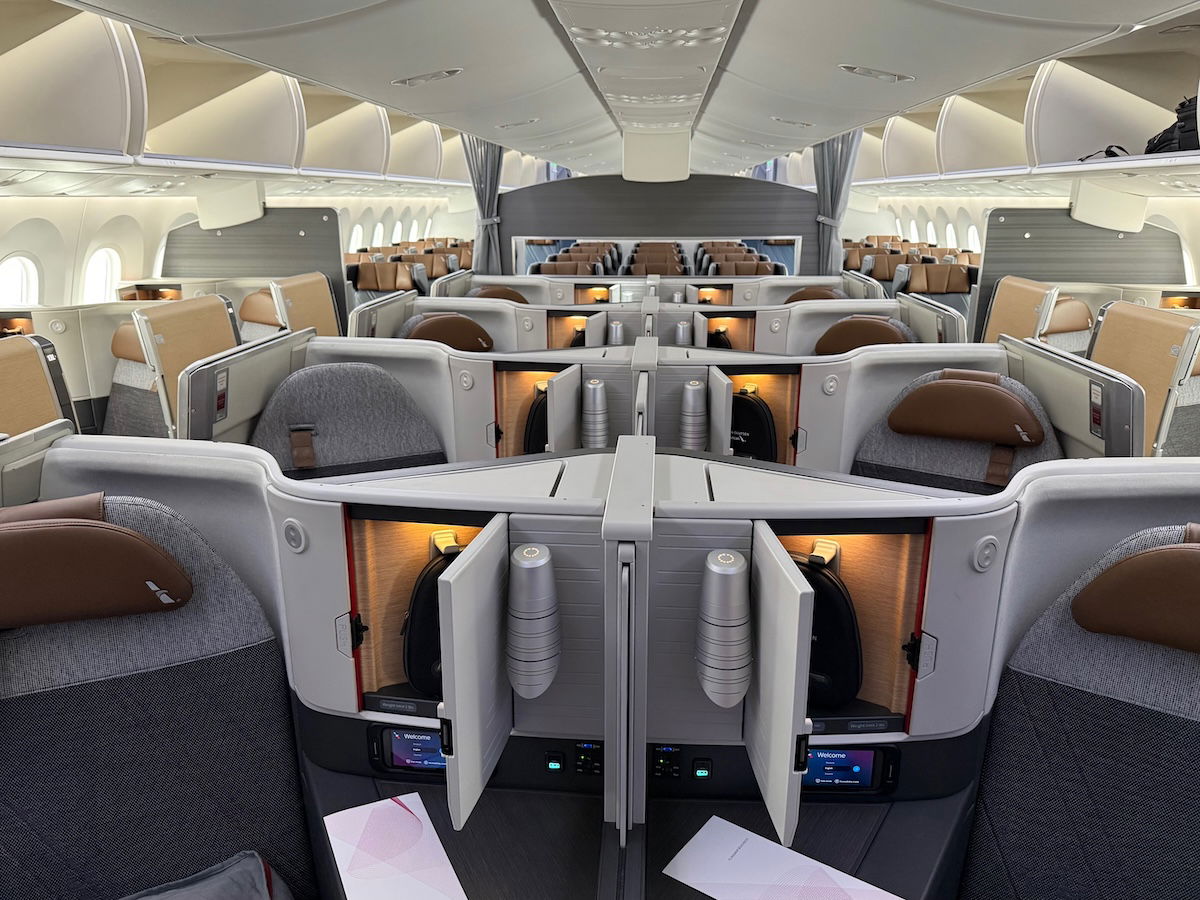
Bottom line
Most flights have some number of empty seats, so you might as well try your best to be one of the lucky people who doesn’t have anyone sitting next to them.
The strategy is pretty straightforward, and it’s basically to take the opposite approach that everyone else takes when assigning seats. If you want the best odds of an empty seat next to you, select a seat as far back as possible, ideally with exactly one empty seat next to it. All else being equal, sit on the right side rather than the left side.
Obviously it’s not always going to work out, because you’re making a bet as to how other passengers and even gate agents will assign seats. However, more often than not, this is the strategy that will maximize your odds. Lastly, don’t forget to just ask the gate agent if there are any seats that might have open seats next to them.
Where do you stand on strategizing to get an empty seat next to you on a plane?





I wonder when the last time you flew in economy was. 15 years ago maybe? hahah
Regarding Seat 47E, the black triangle on the right hand side of the seats in the seat map indicates Preferred seats that can only be selected by Silver status and above members before checkin without a fee. 47E is the furthest forward row on this plane where the middle seat in the center section is NOT a preferred seat. Meaning if you do not have United Silver or above status and only middle seats are...
Regarding Seat 47E, the black triangle on the right hand side of the seats in the seat map indicates Preferred seats that can only be selected by Silver status and above members before checkin without a fee. 47E is the furthest forward row on this plane where the middle seat in the center section is NOT a preferred seat. Meaning if you do not have United Silver or above status and only middle seats are remaining, it is the best middle seat you can select for free as it is the furthest forward of the no cost middle seats.
So, it is completely rational to choose this seat if you are not wanting to pay for a seat if only middle seats are remaining. Also, if you booked via Concur or another similar platform and did not have status and the seat map looked like this with 47E open, it would likely auto assign you 47E as it almost always auto assigns whatever seat you can get for free from front to back.
I never pay for a seat assignment and just board the flight last. I scan the cabin as I walk slowly down the aisle and sit in the best set available.
Not a great strategy for a full flight as all the overhead lockers may be full by the time you board.
I fly first 25% of the time, extra leg room economy 75%, and P.E. when available. I’m long and slender, so always avoid bulkhead seats but never mind the fixed arm rest rows. When traveling with my wife, we both prefer booking aisle-aisle.
Your logic, Ben, in my experience is spot on. It's so funny when I flew for the " Financially Troubled " Pan Am, we would (too often) have a 747 going out with 90 pax out of nearly 390 available. Of course F was filled with non-rev. Ah the glory days of plenty of open seats.
Since when do you sit in economy Ben??
I frequently end up next to an occupied middle seat even when aisle or window seats are free in other parts of the cabin.
In my experience, no advance strategy works. It's too unpredictable. I just book a seat I like and then check the seat map just before check-in closes (60-45 mins before departure depending on the airline) to see if there may be any empty pair/row of seats - if there is, I reassign my seat there and at that point it's more or less guaranteed to stay empty.
this is the real pro-tip: just monitor frequently, especially t-48, and shuffle yourself around as needed.
Newby question - if you already check in at ~24 hours, can you still change your seat (even if your boarding pass has been issued)? Or do you just not check in until the last minute? Or if you change seats, do you need to see the gate agent (for a new boarding pass, or does the mobile boarding pass update)?
Lucky - Maybe everyone already knows the answer to this, but this might be a good topic for a follow-up post.
That assumes one can change seats without paying again. And yes looking at the seat map very close to departure might give you a clue but remember
1. Basic economy passengers likely do not yet have a seat assignment and where will they most likely be put? In a middle seat
2. You don't know how many standbys, including commuters and non revers will be vying for an open seat, along with potentially...
That assumes one can change seats without paying again. And yes looking at the seat map very close to departure might give you a clue but remember
1. Basic economy passengers likely do not yet have a seat assignment and where will they most likely be put? In a middle seat
2. You don't know how many standbys, including commuters and non revers will be vying for an open seat, along with potentially any crew (or any airline) that is dead heading
3. For routes with regular frequency if a prior flight get cancelled any empty seats will be immediately taken.
In other words, you should always assume the middle seat next to you will have a butt in it and on occasion you will have a nice surprise that it doesn't.
I'll never forget the guy in the front J cabin with the crappy aisle seat next to the bathrooms who wouldn't trade places with my SO who had a great window seat in the second J cabin. He thought we were trying to "trick" him into moving in the "inferior" second J cabin.
So what? Every person has different preferences. A seat you consider crappy may be ideal for someone else.
I don't mind being near toilet at all and never quite understood the fuss about those seats. If this was an airline known for running out of meal choices and doing service front to back, I also wouldn't trade.
I love selecting middle seats and telling couples no when asked to switch seats. Unless it’s a parent and child.
What do you gain? This inconveniences all 3 of you.
Ok I would switch. Only One time I didn’t because I wanted to sit in the bulkhead first row of main cabin on American 777-200 which are great seats on an overnight flight. The window and aisle were occupied so I selected the center seat. A couple in their 60s asked to switch . In this case the arm rests aren’t moveable so that is why I didn’t switch I felt they were in better...
Ok I would switch. Only One time I didn’t because I wanted to sit in the bulkhead first row of main cabin on American 777-200 which are great seats on an overnight flight. The window and aisle were occupied so I selected the center seat. A couple in their 60s asked to switch . In this case the arm rests aren’t moveable so that is why I didn’t switch I felt they were in better seats already. They were really puzzled and confused but it ended up being a good flight. I keep my arms crossed when in the middle seat so no worries about armrests.
You've played right into 47E's strategy. He/she wants the entire row to themselves, so is risking selecting the middle seat.
100% agree the best strategy is to smile and ask politely at the gate.
Sometimes you write an article that makes me think “whew, so I’m not crazy to think like this!” I was nodding and smiling through this whole post. Thanks for letting us know we’re not alone!
Another consideration is that many Asian ULCCs will assign premium (exit row/bulkhead) seats last. Because many ULCC flyers don't pay for this, if you pay (and if the flight has empty seats), you may end up with the whole exit row to yourself.
Exit row seats are always too narrow around the hips.
One should never anticipate having an empty seat next to them. With load factors of 85%+ it's silly to even "strategize" that you could. Not just paying passengers but non revers, commuters and deadheading are going to likely take what seats are remaining. Want space? Buy premium.
Why is it “silly” to strategise? The seat tactics described might not work every time but they up your chances of getting a spare seat next to you so why not give it a whirl? It’s worked for me in the past.
All good strategies. Two thoughts:
1) if traveling solo on one of those larger aircraft, a middle section of three or four, focus on the middle aisle. Especially if it's close to a full flight, next to a couple would not be the worst thing - because they would be climbing over each other to get out to use the restroom and leave you alone compared to a standard left or right row with a...
All good strategies. Two thoughts:
1) if traveling solo on one of those larger aircraft, a middle section of three or four, focus on the middle aisle. Especially if it's close to a full flight, next to a couple would not be the worst thing - because they would be climbing over each other to get out to use the restroom and leave you alone compared to a standard left or right row with a window.
2) All of your strategies don't preclude you checking right up until boarding the current seat status. As someone who is typically in standard economy, there have been many times I've been able to move back or up a row in the same seat type to game the middle seat being open. Just did so successfully for a 3.5 hour flight.
I have to say I generally prefer the left side, especially if I’m not concerned about who’s next to me… for me the logic is about having more information. I know what the jet bridge is doing when I sit on the left, and that gives me a much better timing cue than anything posted, let alone an announcement from crew.
These days, I find my flights are frequently impacted by irregular ops… and...
I have to say I generally prefer the left side, especially if I’m not concerned about who’s next to me… for me the logic is about having more information. I know what the jet bridge is doing when I sit on the left, and that gives me a much better timing cue than anything posted, let alone an announcement from crew.
These days, I find my flights are frequently impacted by irregular ops… and having more info than the airlines provide can save a lot of unnecessary stress. I sure as hell don’t want to be standing up already and waiting if we’ve landed in a small airport with a ramp (no jet bridge) or wheel up stairs (still heavily used in the Caribbean) and no one is around to push them over to the plane yet.
Just my personal preference…
Yep avoid 47D or 47E - that must be a mistake. Surely no one purposely selected that seat! That being said I was once on a flight sitting next to this elderly lady in the middle seat and she said how much she hated flying and always wanted to be as far away from the windows as possible - to not see out.
I fly ORD-AUH on a A350. I employ this strategy and I haven't had someone take the middle seat in a while.
I also like to sit by the galley as the flight attendants can pump me full of booze.
When I fly with another, we do the aisle/window strategy and it works most of the time.
Why, what do you think the person in 47E is up to?
Could be "extra large" person choose middle seat not to get bumped :-)
@Eric
They don’t get up during the flight and like to cross their arms. Middle seats are great.
No science behind this, but I expect the left side fills up first because people know that A is a window seat, and C is an Aisle on just about every airline. Also, people tend to be right handed and the left side aisle makes it easier to do stuff.
As for the aisle & window couples strategy, it seems to work best in extra legroom areas of economy cabins (three across) and premium...
No science behind this, but I expect the left side fills up first because people know that A is a window seat, and C is an Aisle on just about every airline. Also, people tend to be right handed and the left side aisle makes it easier to do stuff.
As for the aisle & window couples strategy, it seems to work best in extra legroom areas of economy cabins (three across) and premium economy (when three across in middle of wide bodies like 787). People seem reluctant to pay more for a middle seat. It not inconsiderate in my opinion as in the end, if its a full flight, every seat gets filled anyway.
It's fairly irrational, but on a 2 aisle plane, you might save a few seconds deplaning by sitting on the left side.